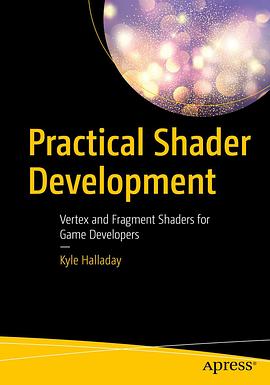Practical Shader Development
豆瓣
Vertex and Fragment Shaders for Game Developers
Kyle Halladay
简介
It’s time to stop thinking that shaders are magical. You can use shaders to turn data into stunning visual effects, and get your hands dirty by building your own shader with this step-by-step introduction to shader development for game and graphics developers. Learn how to make shaders that move, tint, light up, and look awesome, all without cracking open a math textbook.
Practical Shader Development teaches the theory behind how shaders work. The book also shows you how to apply that theory to create eye-popping visual effects. You’ll learn to profile and optimize those effects to make sure your projects keep running quickly with all their new visuals. You’ll learn good theory, good practices, and without getting bogged down in the math.
Author Kyle Halladay explains the fundamentals of shader development through simple examples and hands-on experiments. He teaches you how to find performance issues in shaders you are using and then how to fix them. Kyle explains (and contrasts) how to use the knowledge learned from this book in three of the most popular game engines today.
contents
1. Hello, Game Graphics
2. Your First Shaders
3. Using Textures
4. Translucency and Depth
5. Making Things Move
6. Cameras and Coordinates
7. Your First 3D Project
8. Diffuse Lighting
9. Your First Lighting Model
10. Normal Mapping
11. Cubemaps And Skyboxes
12. Lighting in Depth
13. Profiling Shaders
14. Optimizing Shaders
15. Precision
16. Writing Shaders in Unity
17. Writing Shaders in UE4
18. Writing Shaders in Godot
Important Code Snippets